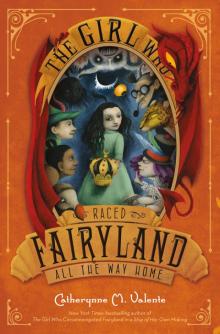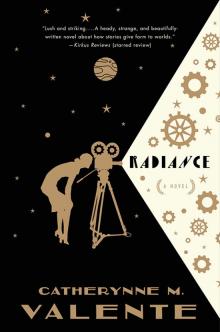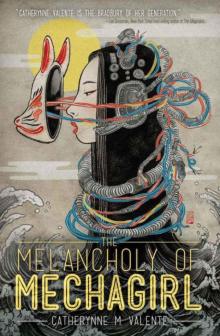


The Handbook for Bad Days
Eveline Helmink

Thank you for downloading this Simon & Schuster ebook.
Get a FREE ebook when you join our mailing list. Plus, get updates on new releases, deals, recommended reads, and more from Simon & Schuster. Click below to sign up and see terms and conditions.
CLICK HERE TO SIGN UP
Already a subscriber? Provide your email again so we can register this ebook and send you more of what you like to read. You will continue to receive exclusive offers in your inbox.
FOR YOU,
Because at night I heard you crying, and I didn’t know quite what to say.
I found some words.
// Author’s Note
This is not your average self-help book. I don’t propose a method or a ready-to-use, five-step plan for your hard days. Sometimes all a bad day needs is a fluffy cardigan, a hot shower, or a nice walk. Sometimes you can keep it simple. Other times you need a little more. The shortcuts in this book are designed to make it easier for you to get started.
I am not a coach, a psychologist, or a teacher, but I’ve had a lifelong fascination with frayed edges, imperfection, and resilience. These days, I consider myself a cheerleader for adversity, chagrin, and discomfort, and it’s my experience that although bad days don’t exactly make life pleasant, they do make it interesting. They are part of life—neither good nor bad on their own. And it’s often on the days when things aren’t going so well that you’ll learn the most about yourself. As Pema Chödrön says, “We think that the point is to pass the test or to overcome the problem, but the truth is that things don’t really get solved. The healing comes from letting there be room for all of this to happen: room for grief, for relief, for misery, for joy.”
I hope with all my heart that The Handbook for Bad Days will help you to face your worst days with courage, with compassion, and with your head held high.
— Eveline Helmink
// Introduction
I take the key from the ignition of my car and watch as the rain hits my windshield. In five minutes, at half past three, I will be with my mother. Which gives me five more minutes inside this steel cocoon. I already know what’s about to unfold. I’ve had this experience many times before.
First, a feeling of resistance boils up inside of me: I don’t want to, I don’t want this, I want my mother to be healthy and living at home with my father. This is unfair and stupid. Then sadness washes over me: I don’t want things to change or pass, and I want my mother back, and I want it now. Then comes the bargaining: She is still there—and she may no longer speak the language of words, but the language of love, which is universal and timeless. Then the fear: What if she’s sad? What if she’s not having a good day? Then the courage: I’ll be there. Followed by acceptance: This is how it is.
I observe all of it and exhale. Only then do I open the door and get out.
My arms spread wide. I smile a real smile. And then I go and see my mother.
* * *
In a time when we are so eager to share how perfectly our lives are going, how #blessed we are, and what a great job we’re doing to get the most out of our body, mind, and soul at every moment, there doesn’t seem to be much room for the inexorable truth that in every human life there are days that are, well, bad.
Days when there seems to be less of everything: less energy, less flow, and less positivity. Days when everything seems to go wrong. When, for example, you are all but certain you will end up lonely and miserable, simply because it’s your destiny, and after all, all signs are pointing to the inevitable—why else would you have a flat tire? Or days when, even though nothing extraordinary is happening, you wake up with a knot in your stomach, and a faint mist of sadness is hanging around you, and whatever you do, you cannot seem to shed it. Your skin is breaking out, your hair is lifeless, and you meditate for an hour because it’s supposed to help, but then you drop your bowl of yogurt and granola on the kitchen floor and conclude: I might as well have stayed in bed. No matter how thoroughly you search, you can’t find your mojo anywhere.
Sometimes, bad days happen in reaction to things that are unfair, unexpected, or embarrassing: Your boss gives you some unwelcome feedback, or you’re going through a rough patch with your partner. Other times, they appear out of the blue. It hurts, having a day when you wish you could give the finger to the merciless universe that seems to conspire against you and it feels as if the universe, in total indifference to the fate of one of its billions of earth-dwelling inhabitants, is returning the gesture. It’s paradoxical, but on tough days, everything feels both incredibly personal and totally impersonal at the same time.
Now, I don’t know about you, but the moments when I’m grumpy, irritated, sad, and/or tired are not the moments when I want to hear that I should meditate more. I don’t necessarily feel like braving a rainstorm to bike to the gym or spending an hour in the kitchen to make a plant-based meal, or motivating myself to scrutinize a thick and complicated self-improvement book, however healing those things may be. On my bad days, I lack the energy. I want nothing.
When you’re having a hard day, hearing about all the things you should be doing is usually not what you are hoping for. Just like you’d prefer that no one tell you that you “will find another in no time” after your boyfriend just walked out the door or that “there will be better opportunities” after you’ve missed out on another job. It’s not that these pieces of advice aren’t meaningful; they often make all the sense in the world. But while you may know there’s wisdom there, that’s not what it feels like. On hard days, it takes just a little bit longer to get from zero to Zen than on days when everything is rolling along smoothly.
To put it plainly: On my worst days I’m pretty pleased with myself if, by the end of the day, I’ve managed to wash my hair and not polish off the entire pint of ice cream in one sitting.
As you can probably tell by now, I have a lot of experience with bad days. But, of course, the great irony is that I am an editor in chief for one of the biggest happiness brands in one of the happiest countries on earth: the Netherlands. My magazine, Happinez, is committed to happiness, personal growth, and meaningful and purposeful living. We produce magazines all over the world, provide online courses, and organize and host dozens of events each year, including a three-day happiness festival.
In recent years, Happinez has inspired hundreds of thousands, if not millions of people worldwide by sharing our views on happiness and what it means to live a mindful life. As a matter of fact, not a day goes by that I don’t concern myself with these topics. I can safely say I am all about happiness… Not only did I turn it into my job; even after office hours, I always have happiness on my mind. Just like everyone else, I too like to live a pleasant, light, and effortless life.
So why, you might be asking, is this woman whose personal and professional life is all about happiness writing a book about bad days? Why would someone like that be cheerleading for sitting with our disappointment, headwinds, and overall misery? Because if there’s one thing I know after a lifetime of thinking about happiness, it’s that happiness is not like completing a marathon, where you cross the finish line, are awarded a medal, and remain eternally gratified. That’s just not how happiness works. Happiness isn’t a constant state of being. It isn’t static, solid, and permanent. On the contrary, happiness is dynamic, flowing, and free.
True happiness isn’t about cutting out the bad days; it’s about accepting life as it is. And, in fact, it’s often on those days when everything falls apart that we learn the most about what brings us comfort, resilience, courage, strength, and, yes, happiness.
However much we’d like to hold on to it forever, happiness comes and happiness goes. I sometimes compare happiness to a wild a
nimal: You can’t catch it, can’t hold it in a cage, and you can’t tame it. Happiness has to be free in order to be authentic.
In a world in which, theoretically, we can have anything we want, it can chafe that happiness is not something we can possess. Slowly but surely, the idea has permeated our society that happiness can be engineered and that, as long as you work hard enough, all your dreams will come true. Every TV commercial, talent show, and social media post is aimed at making us believe that. You are the creator of your happiness, and if you aren’t happy, it is your own fault. So we pursue happiness. We search for it everywhere. We build halls of mirrors of perfection, joy, and control, only to be shocked by any blemishes, cracks, and dents. We tell ourselves that life should never be ugly or uncomfortable. Any pain or failure is to be polished away, repaired, reversed, or at least swept under the rug as quickly as possible.
You would almost feel guilty for having bad days. Oh, you feel miserable? Such a shame you haven’t managed to meditate that out of your system yet!
I find that attitude so unnecessary. A life spent thinking in binary qualifications—happy and unhappy, perfect and imperfect, beautiful and ugly—can never be a complete one. Disappointments, discomfort, resistance, pain, and misery are part of life too. They’re intrinsic to being human. Only after you’ve learned to accept the dark alongside the light can you really say that you’re living your life to the fullest. Bad days are included. I call a life in which you are prepared to also accept lesser days and in which you dare to feel both good and bad an inclusive life.
You can only experience deep inner peace if you give up your forced attempts to become the “best” version of yourself, and instead aspire to be the purest, most authentic version of yourself—flaws included.
In his bestseller The Subtle Art of not Giving a F*ck, Mark Manson very clearly explains why the pursuit of happiness can be so contradictory. He says (and pay attention, because it really is a bit of a mind fuck): “The longing for a positive experience is in essence a negative experience. While the acceptance of a negative experience is in fact a positive experience.”
Manson is speaking a profound truth there. Precisely when you learn to be present on lesser days, you will begin to experience them as positive. The forced longing for positive experiences actually is a cage: We hold ourselves captive to perfection and permanent happiness, and in doing so, we exclude so many things. The world is bigger than that. You are bigger than that.
If you pay close attention, you’re likely to discover that this is the quintessential lesson of nearly any spiritual practice. We must accept and adapt to life as it is.
Bernie Glassman, Zen master and founder of the Zen Peacemakers, once said to me in an interview: “By freedom many people today mean the end of pain and injustice. But suffering can end, even if pain and injustice exist. Pain is located in our bodies, but the suffering is in our heads. We must learn to see life as it is: Things come and things go.” Inner peace is exactly like that: The bad days don’t disappear, but we accept their ebb and flow.
And the good news is: You can do something with bad days, however uncomfortable they may be. For starters: Don’t be afraid of resistance, failure, and struggle—they’re simply parts of life. Instead of learning to ignore or fight these feelings, you can learn how to anticipate them and how to surrender yourself to them. Negative emotions don’t exist to be “fixed,” but to be understood. Use those sorrow-drenched phases as a chute to deeper self-knowledge: You slide down, beyond the persistent thoughts, habits, judgments, and longings.
I am (no longer) afraid of these days myself, however gray and looming they may be. Even days that seem lifeless and bleak bring opportunities for introspection, and for practicing self-love. Often my bad days direct me to the essence of things. They highlight what is not okay, what is off balance. If you welcome them in, emotions like sadness, pain, and shame are companions that can teach you a thing or two. If you are brave enough to feel and observe your emotions in the moment, you will also be able to let go of them again instead of carrying them around.
Those bad days you’re so afraid of and would rather dodge are precisely the days when you can learn the most about yourself. Acknowledging your feelings, in both senses of the word, opens up space. So take a deep breath. Zoom out. What are those feelings telling you? Whenever I’m angry, it is because something is out of balance with the things I find important. My anger indicates where my boundaries lie. Whenever I’m jealous, the feeling points to something that I consciously, or subconsciously, long for. When I’m disappointed, that means that I still care about something I didn’t succeed at doing or that I deprived myself of. Bad days aren’t the end of the world—they’re the beginning of an inward journey, gateways to a stronger, more balanced, braver version of yourself.
Examining your lesser days is not about changing or improving yourself. Rather, it’s about a deep acceptance of all the things you are. About discovering your authenticity. About increasingly becoming your own true self, with all your facets, all your colors, in full presence.
There will never come a time when you no longer have bad days. But there can be a time when you’ll be able to learn from them, and accept both yourself and the situation at hand exactly as they are. I know because I found out through trial and error.
Life can be ruthlessly dreadful. There, I said it. I may have turned happiness into my job, but life has a way of hitting you over the head and breaking your heart. It can be a struggle, I know. People can see me as the enthusiastic editor in chief, the loving friend, a creative thinker, a keen wit.
But I’m equally a divorced single mom with a dubious love life who also has a mother with early-onset dementia who can no longer live at home. I have a more than full-time job and two young boys running around the house. I argue a lot, often talk faster than I can think (with all the attendant consequences). I make ill-advised jokes, rarely feel embarrassment, have a love-hate relationship with the gym, eat Oreos for dinner, and lose sleep over the smallest issues. Two years after I moved in, my house still doesn’t have a single hanging lamp, and to be honest, I’m perpetually restless.
My heart has been blown to a thousand pieces, more than once. I have days when I cry, whine, am apathetic, nauseous, cranky, and so on. But, by now, I know that those days aren’t the end of the world.
I’ve begun to go with the flow, like a surfer conquering a massive wave. The secret? Equal parts surrender and control. As long as you make it a habit to find some meaning or purpose in the everyday and in seemingly bad events and moods, you will resurface. When you’re willing to start living your most inclusive, full life, you must blow up the dams that separate “happy” and “unhappy” in your head and heart, and allow the primal energy of each to start flowing freely. The energy of being as it is, in this moment.
Sometimes we call this living from your heart. Our heart doesn’t tell us what is nice; it tells us what is true. It speaks what only you can irrefutably understand, seemingly from the core of your soul. Living from your heart isn’t a quick fix for a long and happy life; it’s a recipe for an honest and pure life.
I don’t know how you got hold of this book, but you have it in your hands now. Welcome. It’s up to you, and only you, to explore those bad days like a brave warrior, with poise and conviction. To stop running away, hiding, or buffering and to say instead Here I am; bring it on!
This book is not a handbook for how to avoid bad days, nor is it meant as an elaborate spiritual doorstop. My own shelves are lined with self-help books and spiritual classics that each have their own place in my life, but sometimes that deep wisdom wasn’t what I needed in the moment. There are days when it’s too much to contemplate the nature of suffering or the ultimate meaning of life; you just need to make it through to tomorrow.
These shortcuts aren’t magical tools to circumvent negative feelings. Frankly, those tools don’t exist. Be wary of anyone who wants to tell you otherwise. What you will find in the following
pages are things that you can do right now, on your own, in order to tend to yourself just a little bit more on those days when things aren’t going according to plan.
Ultimately, these shortcuts will help you as you learn to trust your inner compass—the one that guides you through the dense forest of emotions, habits, thoughts, expectations, and stories we tell ourselves, toward the clearings that allow the sunlight in. Life will keep handing us lemons; it’s our job to discover our own recipe for lemonade.
A Note: When It Is No Longer Just a Bad Day
There are bad days, there are longer periods of bad days, and then there is depression or burnout. If you remain low for a long period of time and find that you cannot put things into perspective, feel pleasure, or discover bright spots, if nothing in this book makes you laugh or smile, or if you feel like you’re walking through quicksand, then it might be time to visit a professional and examine whether there’s more going on. Your body can give you clues as well: weight change, loss of energy, inability to focus, sleeping badly, or dark thoughts that don’t seem like you; take these signals seriously, and get help from a professional.
There is an interview with Jim Carrey on YouTube in which he clearly explains how your body starts to protest when you’re depressed. When your body tells you, in Carrey’s words, “I don’t want to be you anymore, I don’t want to be the vehicle for that avatar you created in this world, it’s too much for me,” pay attention. Carrey: “You should think of the word ‘depressed’ as ‘deep rest.’ Your body needs to be depressed. It needs deep rest from the character that you have been trying to play.”
FOUNDATIONS
// On Uncomfortable Feelings
There are infinite words and hashtags to celebrate happy moments and experiences. We are eager to share all that is fun, cheerful, funny, and light, just as we expect others to present us with their polished, glossy stories. When someone asks you how you are doing, “good” is the most socially acceptable answer.














